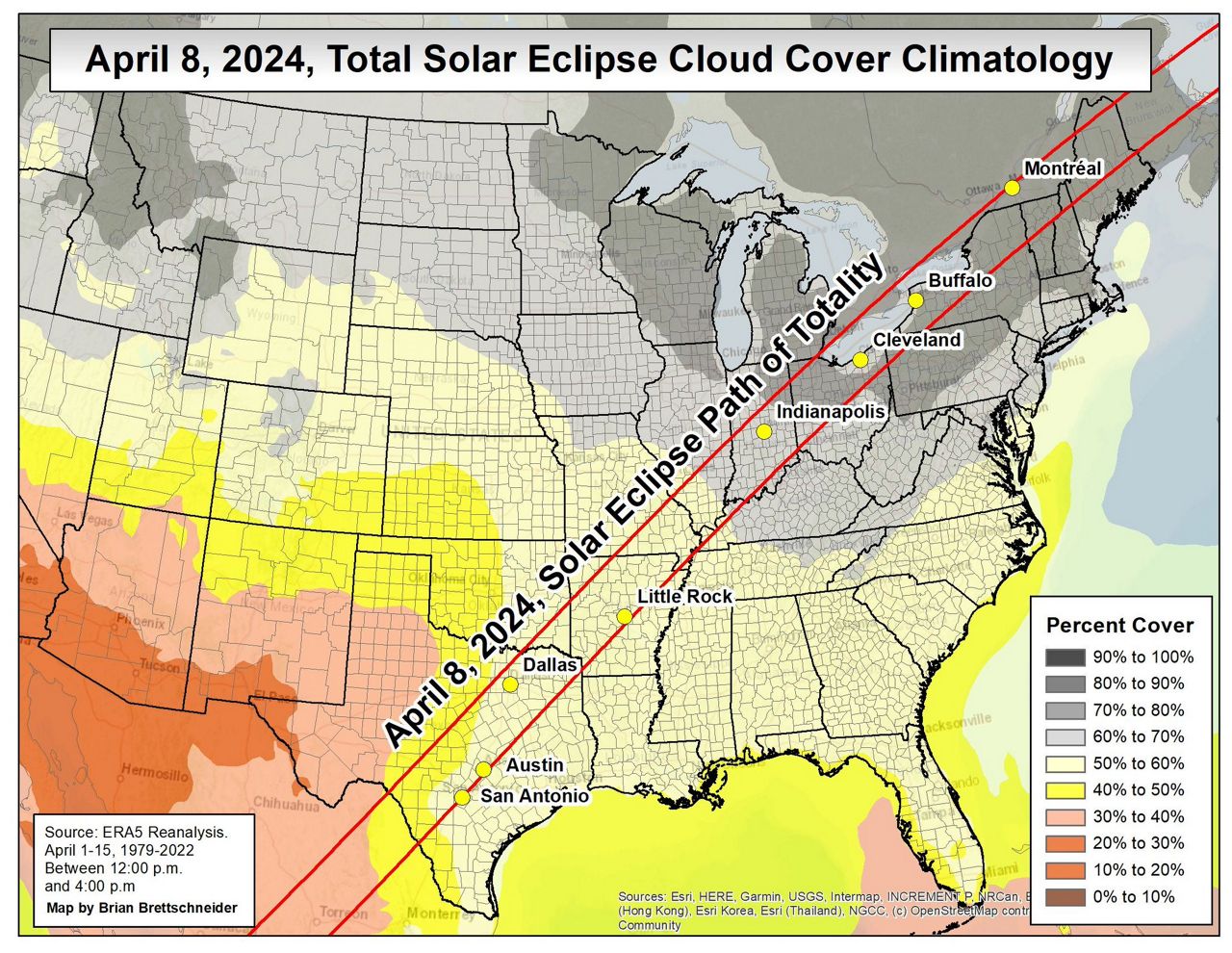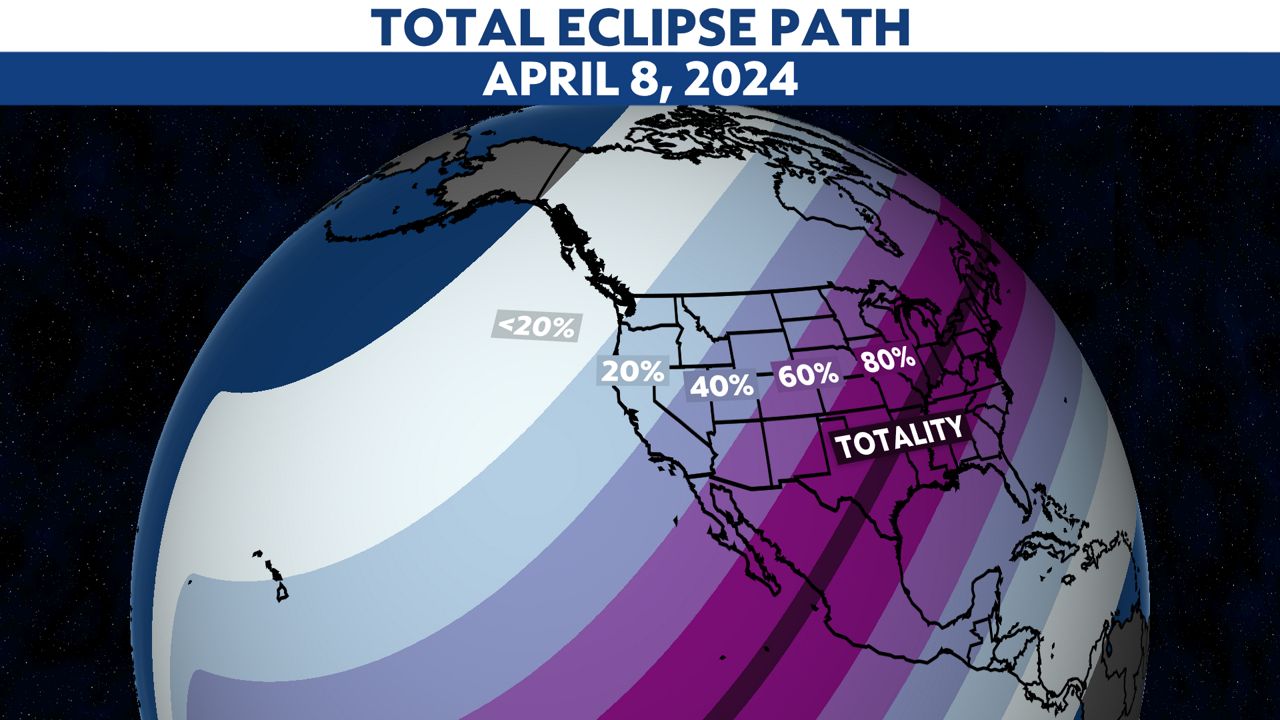The 2024 total solar eclipse is just one year away. We know when and where the solar eclipse will be, but we don’t know where the sky will be clear… but you can play the odds to increase your chances of seeing it.
The path of the total solar eclipse on April 8, 2024, will cut northeast from Texas to Maine. That’s where the moon will completely obscure the sun. The partial eclipse will touch every state, lasting over two hours in most places in the Lower 48.
The total eclipse lasts for over three minutes in some spots along the path of totality.
What’s the forecast?
Wouldn’t it be nice to know where the sky is going to be clear or cloudy a year from now? Unfortunately, that’s not possible, but you can still use long-term climate trends to get an idea of where the best chances of clear sky are.
This map from climatologist Brian Brettschneider shows that afternoon cloud cover in the first half of April is historically lowest in the path of totality from Texas into southern Illinois. There, clouds obscure half of the sky or less. Meanwhile, cloudier conditions happen from northern Ohio into the Northeast, where clouds cover at least 70% of the sky, on average.

(Image by Brian Brettschneider)
The odds of having a mostly sunny afternoon in early April follow a similar pattern: at least 30% of the time in the southern part of the path of totality, but less than 20% of the time on the northern stretch.
Does this mean that viewers in Texas will have a clear day and New Yorkers are out of luck? Not necessarily! These are averages, not forecasts, and it’ll all come down to the actual weather pattern on April 8. But if you’re planning on making a trip into the path of totality, over 40 years of weather records show where your best chances might be. And don’t forget your special eclipse-watching glasses!
Our team of meteorologists dives deep into the science of weather and breaks down timely weather data and information. To view more weather and climate stories, check out our weather blogs section.

